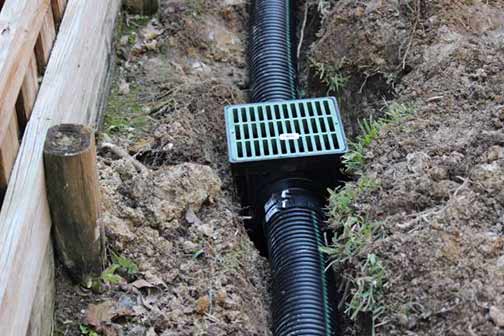
If you have drain tiles installed in your house, you already know how important they are to protect your home from flooding. Drain tiles keep water from your foundation and basement by catching surface runoff or groundwater and diverting it into a collection pit, explains IPM Management.
However, drain tiles will only perform this function when they are maintained properly. The very feature that makes a drain tile effective at protecting your home from water seepage also makes it prone to clogging. Sand and debris can enter your drain tiles via the holes in the pipes.
If this happens, the drain tiles in your home will gradually lose their efficiency until they become virtually useless for protecting your home from flooding. Drain tiles may also be crushed if excessive weight is placed on them or if plant roots penetrate the pipes.
These problems can be prevented or solved through proper maintenance of your drain tiles. However, given the location of the drain tile below ground, maintaining this drainage feature is not always straightforward. How do you maintain the drain tiles in your home?
8 maintenance tips for efficient and long-lasting drain tiles
For optimal function and longevity of your drain tile, follow these maintenance tips.
- Regular inspections
Check your drain tiles regularly for debris and signs of clogging. You can perform a visual (surface-level) inspection once a month. However, to get detailed information about the condition of the drain tile, you should do a drain camera inspection once or twice a year. This specialized camera will let you get up close to inspect the inside of the pipes.
- Install rain filters
Installing filters on roof gutters and downspouts will let you catch debris before it enters the drain tile system. This step helps to limit the risk that some of that debris will clog the pores in the system or the pipes themselves. Keeping the area above the drain tiles clean also helps.
- Clean your drain tile on a schedule
Whether your drain tile is clogged, you should clean it periodically. Cleaning the drain tile is the surest, safest, and cheapest way to prevent worse problems in the future. Do not clean your drain tile with harsh chemicals. The best option is to have a plumber pressure wash the line with a hydro-jetter. Hydro-jetting the drain tile will not damage it.
- Get rid of tree roots
If you think tree roots are growing inside the drain tile, you can remove them with a mechanical drum auger. Depending on the size of the tree roots and how long they have been inside the system, you may also solve this problem by hydro-jetting the line. If this problem persists, you may have to remove the trees or install tree root barriers.
- Repair damaged sections
By inspecting the drain tile on a schedule, you will be able to detect problems in the system before they reach a critical point. The worst issue in your drain tile is probably when a section collapses or separates. Large cracks in clay, concrete, or ceramic drain tiles are also an issue. These should be fixed at once.
- Maintain a stable soil surface
A stable soil surface is essential for preventing erosion around the drain tile. Loose soil around your drain tile will lead to sedimentation inside the system. If there is loose soil above the drain tile, a professional plumber can find ways to stabilize the soil without impeding the efficiency of the drain tile.
- Ensure downspouts are working properly
If a downspout is blocked or discharging water in the wrong place, the drain tile will be overwhelmed, leading to flooding in your home. Ensure that gutters and downspouts are not pointed toward the base of your building. This single step can solve as much as 90% of the issues affecting your drain tile.
- Address grading issues
Proper surface water management is essential for the correct functioning of your drain tile. Negative grading around your home will cause water-pooling near the house every time it rains. Solve this by making sure the ground slopes away from your building. If this is not done, nothing else you do will stop the problems in your drain tile.
Finally, the first and most essential step for the longevity and optimal function of your drain tiles is correct installation. A drain tile not installed correctly will fail before it starts working. Your drain tile should have the proper slope to prevent water from pooling inside the line. It should also be installed on top of a waterproof membrane.
If your drain tile was not correctly installed or has aged, the only option may be to excavate it and install a new drain tile. Before you hire a plumber to install a drain tile in your home, you want to verify their expertise and experience with these projects. You also want to know if they will do post-installation maintenance.


